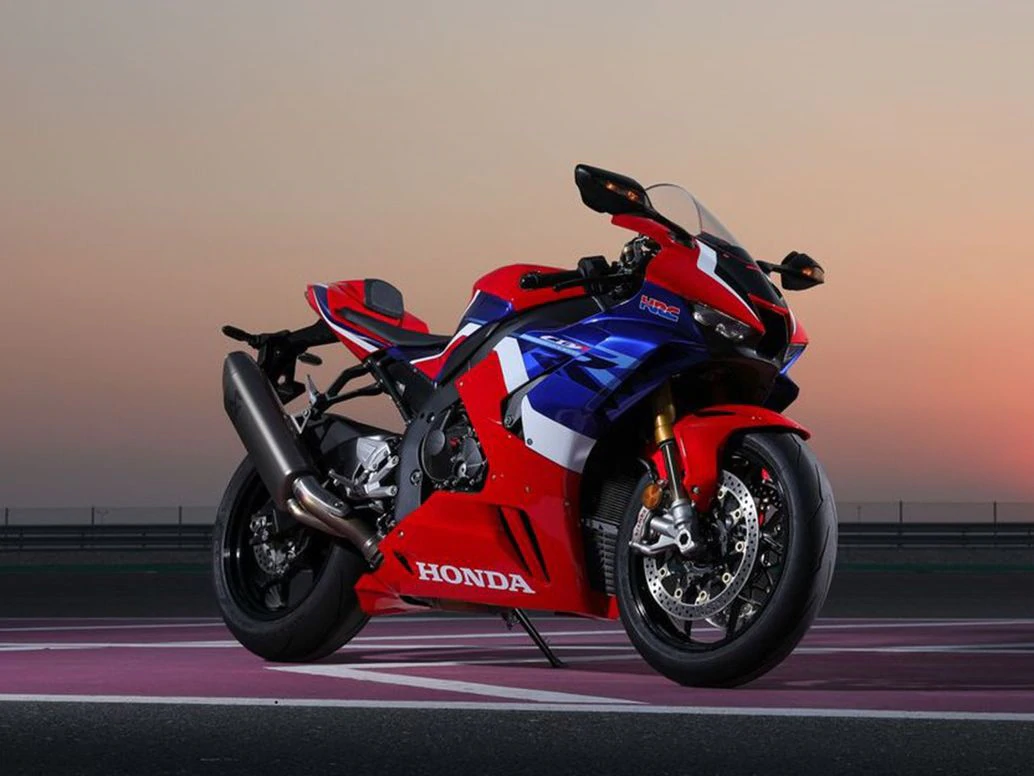FAQ: How do I know what size gloves to order? Can I measure?
The field of aerodynamics is clearly the latest battleground for the world’s major motorcycle makers as they vie to increase downforce and reduce drag. But while the main focus has been on winglets at the front of bikes
Honda has now turned its attention to the tail.Although not as obvious as changes to a bike’s front end, the tail is actually vital when it comes to reducing drag. For many years the approach was to use relatively
bulky, hump-shaped rear ends to smooth airflow coming down the rider’s back, but more recently there’s been a trend toward shorter, more minimalist back ends.
Few are as stubby as the one seen in Honda’s latest Japanese patent application, though. As well as being incredibly short—sacrificing any chance for a passenger seat or any luggage space—it incorporates a massive central tunnel
that allows air to flow straight through what little bodywork there is.

Through-flow design is also currently in use on Ducati’s Panigale V4, though in a different arrangement.
The idea of allowing air to go through the tail isn’t new in itself, and it’s one that several firms have picked up on in recent years. The most notable example in current production is probably Ducati’s Panigale V4,
which features vast scoops that funnel the airflow to outlets in the rear.Honda’s design goes even further though. The tail is basically a small, flat platform with a hoop-shaped wing above it. The only obstruction to airflow
is a small central strut that adds some structural strength to the upper section. The patent application’s text, translated from Japanese, explains that “it is possible to obtain an aerodynamic merit such as reducing the wind
resistance around the rear cowl and obtaining downforce.”That downforce presumably comes from the angle of the flat upper and lower sections of the tail.

Road-Going Intention
Although clearly intended to improve both the straight-line performance and cornering ability of a bike, the new tail design is aimed at a roadbike rather than a racer.That’s clear from several aspects. Firstly, there’s a taillight
and brake light incorporated into a strip along the rear of the upper “wing” section. The text confirms this, saying: “This saddle-riding type vehicle is provided with a rear combination lamp in which a light-emitting surface
is arranged at a rear edge part of an upper part of a rear cowl.”’There’s also an extended licence plate bracket with turn signals attached to it, but the most clear indication that this is for a road machine is the fact that
the patent is actually not related to the design benefits of the tail, but to a piece of luggage specifically designed to fit it.
As well as losing any chance of a passenger seat, the through-flow tail leaves no scope for under-seat storage or for strapping bags on top. Honda’s recognised this, and so has designed a small bag that fits into the air channel
itself. While using the bag will eliminate the aero benefits of the tail’s central hole, it means there’s scope for carrying a few essentials if necessary. It’s designed to snap around the central support pillar, with press
studs keeping it in place but allowing it to be removed in seconds.

Underseat Exhausts
During the 1990s and early 2000s, underseat exhausts were the hottest trend in motorcycle styling—largely thanks to the Ducati 916 and the Honda NR750 that preceded it. But over recent years they’ve become less popular as manufacturers
have followed the mantra of mass centralization and pushed the bulk of mufflers and catalysts as close as possible to the engine itself.However, Honda’s new tail design clearly revives the underseat exhaust with two end cans
mounted directly under the stubby rear end. Unlike the underseat pipes of old, these barely extend past the middle of the rear wheel, so they shouldn’t impact mass centralization as much as the older versions. The two cans
are also separated slightly so they can sit a bit lower, letting the rear tire go between them when the suspension compresses.

Although Honda’s patent shows its new tail design very clearly, it’s important not to pay attention to the front end of the bike illustrated in the document.The nose, tank engine, and main chassis very clearly borrowed from the
old, 2008–2017 version of the CB1000R, a bike that’s long since left production. Unsurprisingly, the styling doesn’t suit or align with the new tail—in particular the exhaust can’t line up with the underseat layout of the new
rear end. Basically, Honda has used the outline of the CB1000R as a placeholder for elements of the patent that aren’t essential to the actual innovation, and in doing so it hides whatever the actual bike that this new rear
end is intended for. However, the text specifically says it is a bike with a transverse-mounted, multi-cylinder engine.


.webp?h=da7de074b63b70ecbeb15d2088bb90e2)

.webp?h=1f209b1eb8089a8e043394989aa42268)